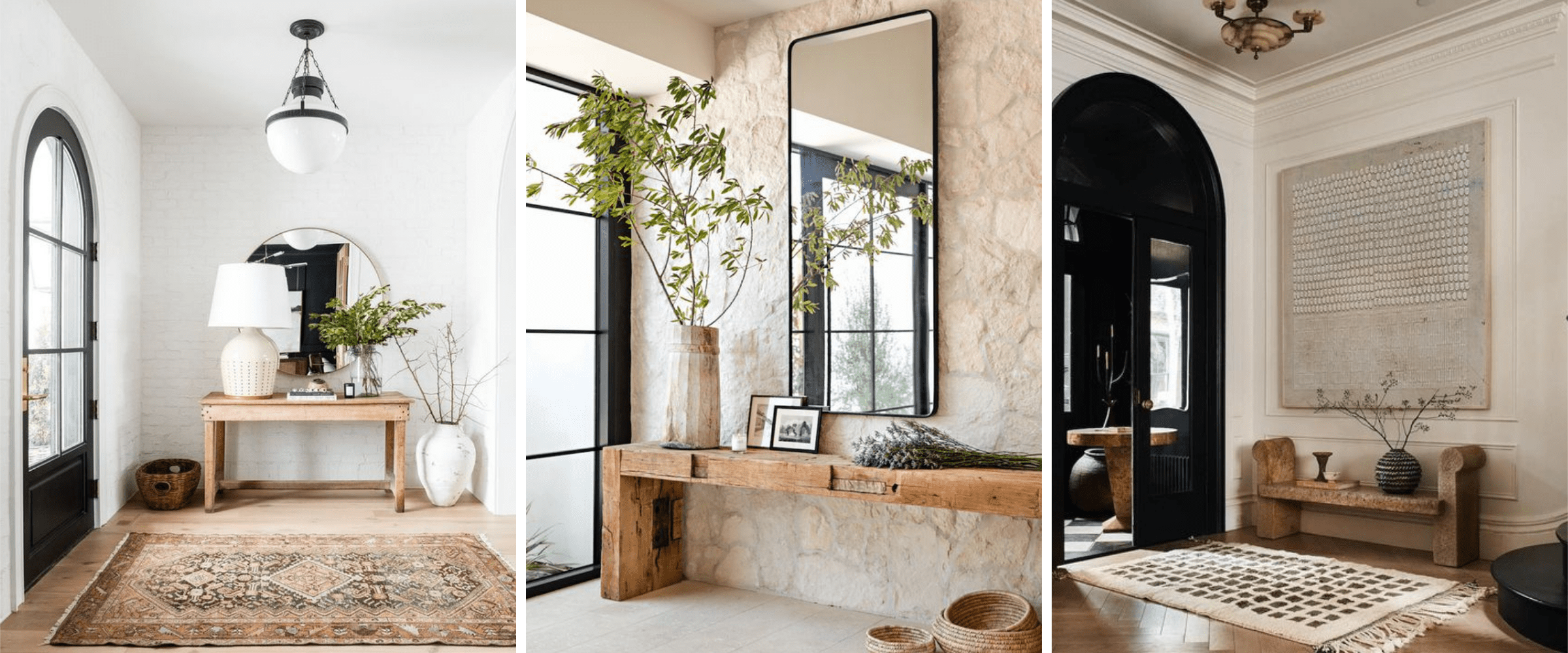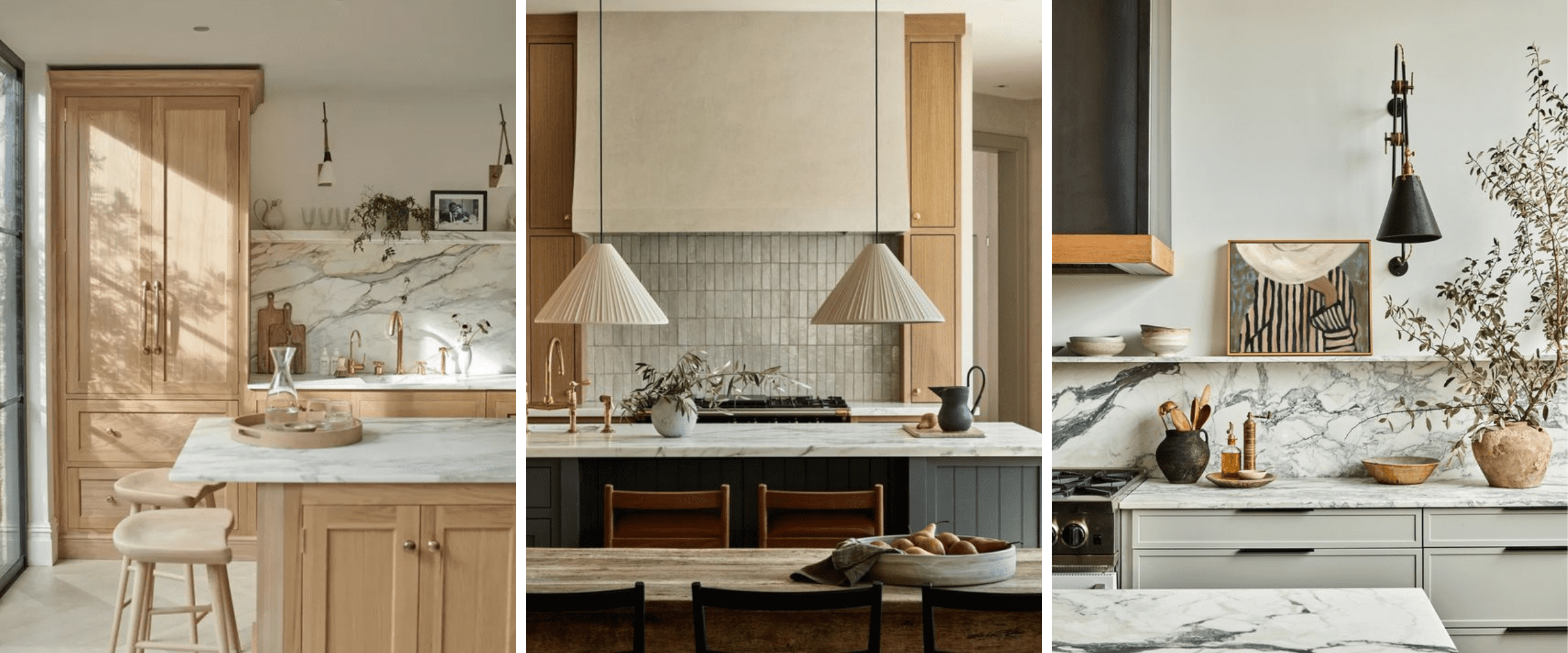Welcome! Today we are going to walk down a captivating journey through the world of interior design, where texture reigns supreme.
Texture is the secret ingredient that infuses soul into interior design. As a design professional, I can attest to the immense power that texture wields in shaping the ambiance and overall aesthetic of a space.
Texture refers to the visual or tactile quality of a surface, material, or object, and it plays a vital role in creating a multi-dimensional experience within a room.
Visual texture, also known as perceived texture, refers to the appearance of a surface and the visual cues it provides. It can range from the rough, weathered look of exposed brick walls to the smooth, glossy finish of polished marble countertops.
Visual texture adds depth, interest, and a certain allure to a space, making it visually captivating.

Images via Pinterest.
On the other hand, tactile texture refers to the physical sensation experienced when touching a surface or object. It encompasses the sensation of running your fingers across a plush velvet fabric, the coolness of a glass tabletop, or the warmth of a natural wood floor.
Tactile texture engages our senses, inviting us to interact with our environment and creating a tactile experience that enhances the overall enjoyment of a space.
There is also implied texture, which refers to the illusion or suggestion of texture through visual cues. For instance, a photograph or a painting depicting a rough, textured surface can evoke a sense of touch even though it is two-dimensional.
Implied texture adds depth and richness to artwork and can be effectively incorporated into interior design through wall art or decorative pieces.
The interplay of these different types of texture is what truly brings a space to life. By skillfully combining visual, tactile, and implied textures, you can create a harmonious and dynamic environment that engages all the senses.

Images via Pinterest.
Texture has the remarkable ability to evoke emotions, tell stories, and create a narrative within a space, capturing the essence of who you are and what you love.
Texture also acts as a powerful tool in directing the focal points of a room. By strategically incorporating texture, you can draw attention to certain areas, highlight architectural features, or create a focal point that becomes the heart of the space.
Whether it’s a textured accent wall, a statement piece of furniture, or a tactile rug, texture has the ability to guide the eye and create visual interest.
Understanding the power of texture is the key to unlocking the full potential of interior design. By harnessing the richness and variety of textures available, you can transform a space into an immersive and captivating experience that not only pleases the eye but also delights the senses.
So, embrace the art of texture and embark on a journey where every surface tells a story, every touch elicits a response, and every room becomes an expression of your unique style.

Images via Pinterest.
Practical Tips for Incorporating Texture
Now that we’ve explored the captivating world of texture, it’s time to dive into the practical realm of incorporating texture into your interior design. As a passionate advocate of creating visually stunning and tactile spaces, I’m excited to share some great tips that will help you master the art of texture with confidence.
Create a Balanced Texture Palette
When it comes to texture, balance is key. Aim for a harmonious interplay of textures that complement each other and the overall design scheme of your space. Mix contrasting textures to create a dynamic visual impact. For example, pair the smoothness of a polished stone countertop with the roughness of a woven basket or the softness of a plush throw pillow with the sleekness of a metallic accent. Strive for a cohesive composition that evokes both intrigue and harmony.
Consider Scale and Proportion
Texture, just like any design element, should be considered in relation to scale and proportion. Pay attention to the size and dimensions of your space when selecting textured elements. In a small room, opt for smaller-scale textures to avoid overwhelming the space, while in larger rooms, feel free to experiment with bolder and more dramatic textures. Remember, the goal is to create a well-balanced and visually pleasing environment that feels proportionate and harmonious.

Images via Pinterest.
Mix Textures with Other Design Elements
Texture thrives in collaboration with other design elements. Don’t be afraid to mix textures with color, pattern, and shape. Combining different textures can create a rich and layered experience. For example, pair a textured rug with patterned curtains, or juxtapose the smoothness of a leather chair with the intricate detail of a textured wallpaper. This interplay of textures and other design elements will add depth and complexity to your space, making it truly captivating.
Embrace Experimentation
Texture offers endless possibilities for exploration and experimentation. Don’t shy away from trying out different textures to discover what resonates with you and your space. Visit local design stores, explore flea markets, or dive into online treasure troves to discover unique textures that speak to your aesthetic. Allow yourself the freedom to mix unexpected textures and uncover hidden gems that will breathe life into your design.

Images via Pinterest.
Remember, texture is a tool that allows you to infuse your space with your personality and tell a story. So, let your instincts guide you and don’t be afraid to take risks. After all, the most captivating and memorable spaces are often born out of fearless experimentation.
Incorporating texture into your interior design is a transformative journey that will enrich your living spaces and create an environment that is not only visually stunning but also tantalizing to the touch. So, go forth and embrace the power of texture, and may your design endeavors be filled with tactile wonders that elevate your space to extraordinary heights.


